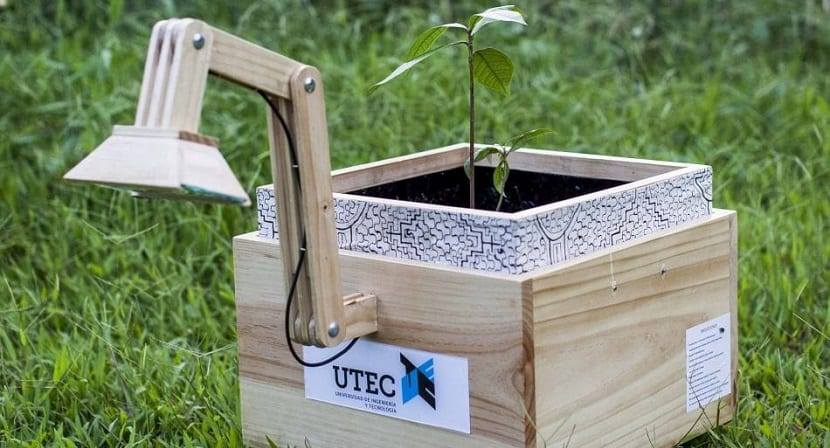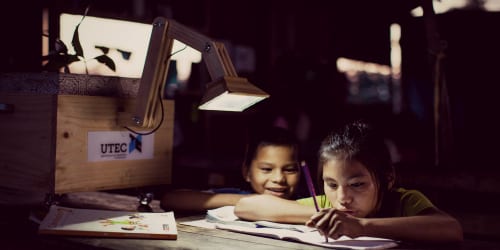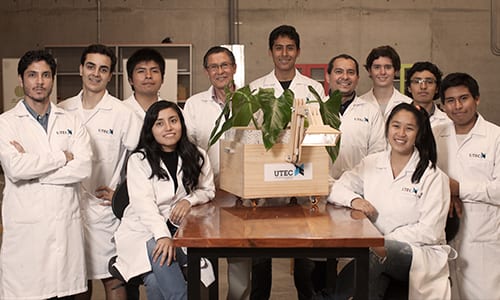
There are many communities and people around the planet that do not have electricity. Reflecting on it, we analyze what it entails: not being able to use the mobile, not having internet, no fridge, no microwave, no light at night, etc. Today we are nobody without light, that is why we are trying to revolutionize the world of light with a new invention.
It is an invention that is the result of a sustainable and renewable alternative to be able to have light in the indigenous communities of Latin America: the plants
How to get light through plants
The invention is called "The plantalamp". Thus, as mentioned, it is a device that, thanks to the plant's photosynthesis process, generates electricity to provide power to a 300 lumen LED lamp, illumination equivalent to that of a 50 watt bulb.
The problem lies in Nuevo Saposoa, where the Shipibo Conibo ethnic group lives. It is a group of families integrated by 137 of them with about 37 inhabitants. In order to reach the homes of this group of indigenous people, you must navigate the rivers of the region for about five hours. Until a few years ago, this community had infrastructure that provided them with electricity, but a hurricane destroyed all the facilities and since then they have lived in the dark.
To alleviate this situation, a research group from the University of Engineering and Technology UTEC of Lima, the Peruvian capital, made an investigation of the quality of the soil and water to be able to analyze the vegetation of the area and create the device called "plantalámpara".

Roughly, we can say that it is a device that uses photosynthesis in plants to generate energy. This generated energy can provide energy to a 300 lumen LED lamp, lighting equivalent to that of a 50 watt bulb, and that for two hours is used to light a medium room, and it is the difference that a child can study or not, or that it is possible to cook comfortably when the sun goes down.
Operation of the planter lamp
This new invention seems something revolutionary and incredible. Let's see how it works:
The plant that will be the one that generates energy can be a tuber (such as the potato) since it generates a large amount of nutrients. This plant is placed in a wooden box that has an electrode grid. Since on earth there are geobacteria (bacteria that do not need oxygen and that feed on the nutrients that plants release from their roots). When these bacteria feed, they generate electrons that are captured by the electrodes of the box. From the electrodes the energy generated passes to a battery, which charges during the day by this use of the photosynthesis process, and which then provides the electricity for the LED lamp.
This method of obtaining energy is based on a renewable and quite efficient source. The advantages they provide is that it prevents communities from having to burn the biomass around them or having to use kerosene lamps in order to have artificial light. These lamps cause respiratory problems and are unhealthy.

To take full advantage of photosynthesis and generate electricity, an invention called Plant-e. It is about the development of devices so that, in the medium term. Any community can have electricity if they have enough plants and electricity to be able to generate electricity.
This Plant-e system is based on buckets where the plants are on a surface with plenty of water. This causes the excess organic matter in the plant to be expelled to the ground, where the geobacteria release the electrons that are captured by the electrodes and stored in the battery.
As you have seen, the human being has enough tools to re-illuminate indigenous communities far from civilization, we only have to improve efficiency and learn to better manage our resources.